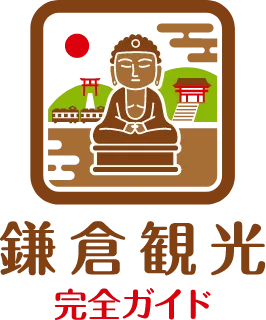Anyo-in Temple (安養院)
Discover Anyo-in Temple
Anyo-in Temple is a serene Jodo-sect temple located in a quiet area of Kamakura. Its formal name is Gionzan Anyo-in Tashiro-dera Temple (祇園山安養院田代寺). The temple originated in the early 13th century, when Hojo Masako (北条政子) built the Choraku-ji Temple to pray for the soul of her late husband, Minamoto no Yoritomo (源頼朝). After being destroyed in a fire during the early 14th century, it was rebuilt on the site of the former Zendo-ji Temple and renamed Anyo-in in honor of Masako’s Buddhist name, Anyo-in-den. During the Edo period, it merged with Tashiro-dera, forming the current structure.
Architecture, Scenery, and Seasonal Beauty
The main hall enshrines statues of Amida Nyorai (阿弥陀如来), Senju Kannon (千手観音), and a restored image of Hojo Masako (北条政子), which offers a glimpse into her later years. Under the eaves, visitors can admire intricate wooden carvings of phoenixes and dragon deities—exquisite examples of traditional Japanese craftsmanship.
Within the temple grounds stands a majestic Maki tree (槇) over 700 years old, designated as a Natural Monument by Kamakura City. In spring, the highlight is the “Obake Tsutsuji,” a massive rhododendron with magenta-pink blossoms that create a vibrant and photogenic scene.
Spiritual Significance and Blessings
Rooted in Jodo teachings, the temple serves as a place to pray for rebirth in the Pure Land. The Senju Kannon statue, also known as “Tashiro Kannon,” is believed to bring blessings for romantic relationships, career advancement, and marital harmony. The “Higiri Jizo” (日限地蔵) is another notable figure here, known for granting time-bound wishes, especially those related to love.
Goshuin, Pilgrimages, and Temple Culture
This temple is part of several renowned pilgrimage circuits, including the Bando 33 Kannon Pilgrimage, the Kamakura 33 Kannon Pilgrimage, and the Kamakura 24 Jizo Pilgrimage. Visitors often come seeking Goshuin (御朱印) calligraphy stamps as part of their spiritual journey. The site offers an authentic experience of Japanese religious culture and tradition.
How to Get There from Tosh’s Place (トシズプレイス)
Located about a 15-minute walk from Kamakura Station, the temple is easily accessible. Opening hours are from 8:00 AM to 4:30 PM, with seasonal variations. It’s best to check the current schedule before visiting.
Best Time to Visit and Seasonal Highlights
The best season to visit is from early to mid-May, when the famous Obake Tsutsuji rhododendrons are in full bloom. This period often overlaps with Golden Week, so arriving right at opening time (around 8:00 AM) ensures a quiet, peaceful experience. If you’re staying at Tosh’s Place (トシズプレイス), its flexible kitchen-equipped style lets you make the most of early mornings at your own pace.
Nearby Spots Within Walking Distance
Notable attractions within walking distance include Tsurugaoka Hachimangu Shrine (鶴岡八幡宮), the Great Buddha of Kamakura (鎌倉大仏), Kotoku-in Temple (高徳院), and Hase-dera Temple (長谷寺). Visiting early in the day allows you to enjoy these iconic sites with fewer crowds and more intimacy with the surroundings.
Who Should Visit? Interests and Travel Styles
This temple is ideal for history enthusiasts, temple pilgrims, flower lovers, or those seeking a peaceful retreat. Travelers who prefer a slow, residential-style stay will appreciate visiting during quiet morning hours. Using Tosh’s Place (トシズプレイス) as your base, you can enjoy Kamakura without rush, discovering local beauty on your own terms.
Wrap-Up: Why This Temple Is Worth Your Visit
Anyo-in Temple represents a rich blend of Kamakura’s spiritual heritage and natural elegance, closely tied to Hojo Masako (北条政子). With its seasonal flowers, intricate carvings, and sacred atmosphere, it offers a moving and memorable experience. Early or late-day visits reveal the calm, contemplative side of Kamakura, often missed by day-trippers.
